Joshua Yao-Yu Lin
for the LSST Dark Energy Science Collaboration
SupSiam: Non-contrastive Auxiliary Loss for Learning from Molecular Conformers
Feb 15, 2023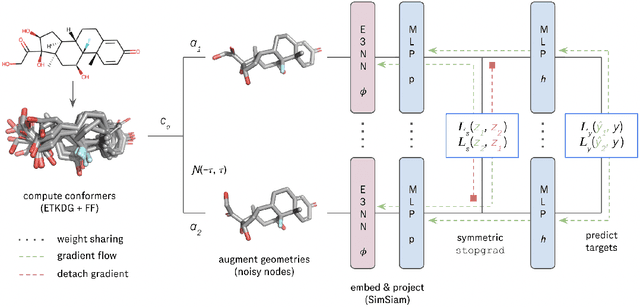
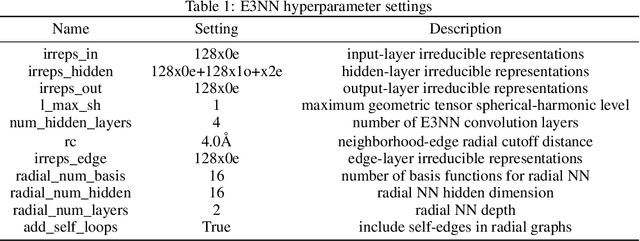
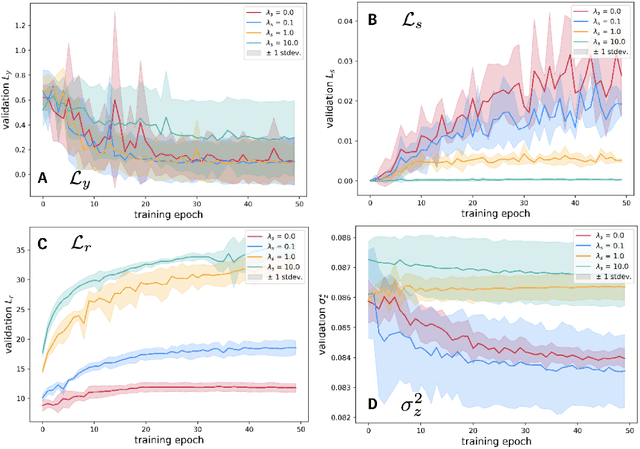
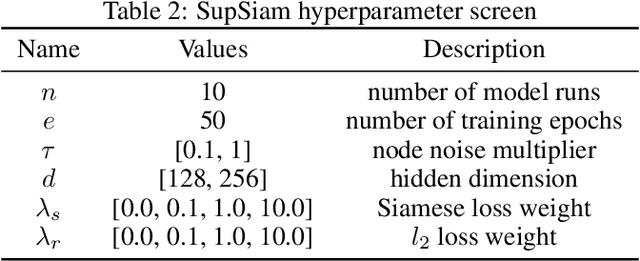
Abstract:We investigate Siamese networks for learning related embeddings for augmented samples of molecular conformers. We find that a non-contrastive (positive-pair only) auxiliary task aids in supervised training of Euclidean neural networks (E3NNs) and increases manifold smoothness (MS) around point-cloud geometries. We demonstrate this property for multiple drug-activity prediction tasks while maintaining relevant performance metrics, and propose an extension of MS to probabilistic and regression settings. We provide an analysis of representation collapse, finding substantial effects of task-weighting, latent dimension, and regularization. We expect the presented protocol to aid in the development of reliable E3NNs from molecular conformers, even for small-data drug discovery programs.
Strong Gravitational Lensing Parameter Estimation with Vision Transformer
Oct 09, 2022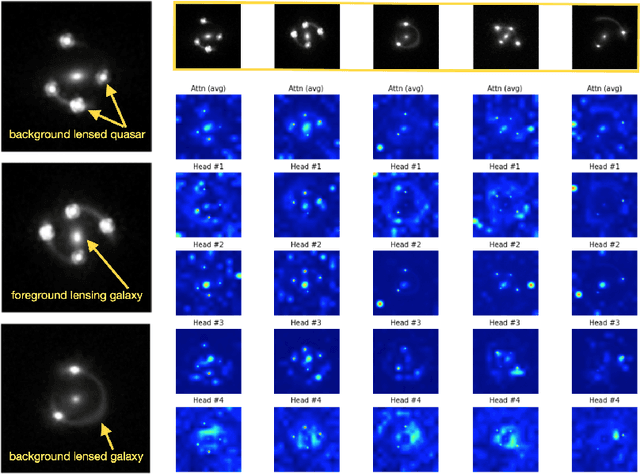
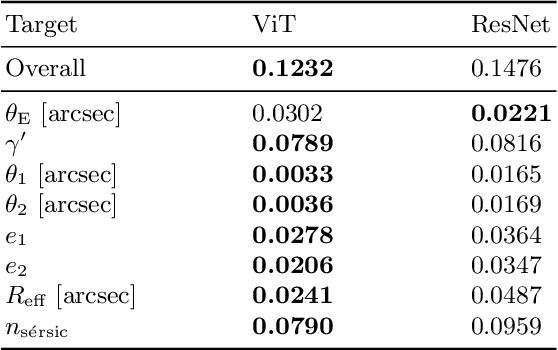
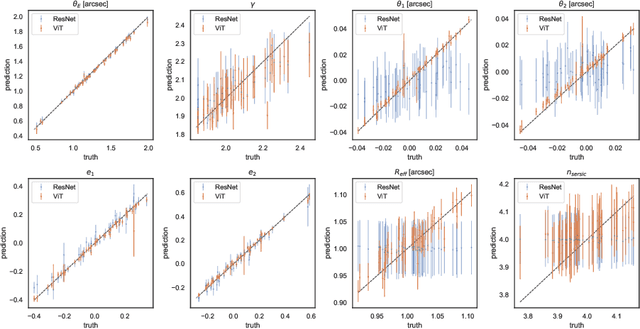
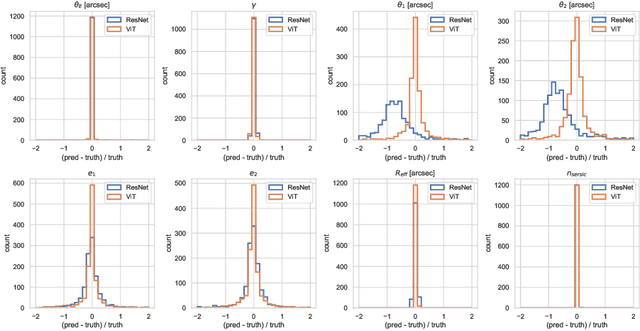
Abstract:Quantifying the parameters and corresponding uncertainties of hundreds of strongly lensed quasar systems holds the key to resolving one of the most important scientific questions: the Hubble constant ($H_{0}$) tension. The commonly used Markov chain Monte Carlo (MCMC) method has been too time-consuming to achieve this goal, yet recent work has shown that convolution neural networks (CNNs) can be an alternative with seven orders of magnitude improvement in speed. With 31,200 simulated strongly lensed quasar images, we explore the usage of Vision Transformer (ViT) for simulated strong gravitational lensing for the first time. We show that ViT could reach competitive results compared with CNNs, and is specifically good at some lensing parameters, including the most important mass-related parameters such as the center of lens $\theta_{1}$ and $\theta_{2}$, the ellipticities $e_1$ and $e_2$, and the radial power-law slope $\gamma'$. With this promising preliminary result, we believe the ViT (or attention-based) network architecture can be an important tool for strong lensing science for the next generation of surveys. The open source of our code and data is in \url{https://github.com/kuanweih/strong_lensing_vit_resnet}.
VLBInet: Radio Interferometry Data Classification for EHT with Neural Networks
Oct 14, 2021

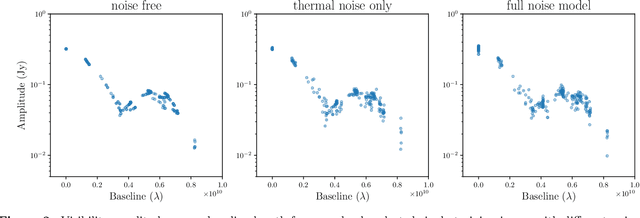

Abstract:The Event Horizon Telescope (EHT) recently released the first horizon-scale images of the black hole in M87. Combined with other astronomical data, these images constrain the mass and spin of the hole as well as the accretion rate and magnetic flux trapped on the hole. An important question for the EHT is how well key parameters, such as trapped magnetic flux and the associated disk models, can be extracted from present and future EHT VLBI data products. The process of modeling visibilities and analyzing them is complicated by the fact that the data are sparsely sampled in the Fourier domain while most of the theory/simulation is constructed in the image domain. Here we propose a data-driven approach to analyze complex visibilities and closure quantities for radio interferometric data with neural networks. Using mock interferometric data, we show that our neural networks are able to infer the accretion state as either high magnetic flux (MAD) or low magnetic flux (SANE), suggesting that it is possible to perform parameter extraction directly in the visibility domain without image reconstruction. We have applied VLBInet to real M87 EHT data taken on four different days in 2017 (April 5, 6, 10, 11), and our neural networks give a score prediction 0.52, 0.4, 0.43, 0.76 for each day, with an average score 0.53, which shows no significant indication for the data to lean toward either the MAD or SANE state.
AGNet: Weighing Black Holes with Deep Learning
Aug 17, 2021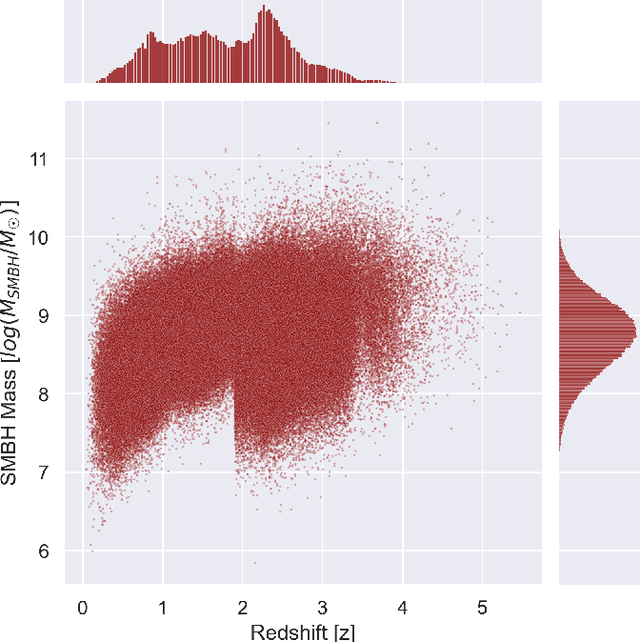
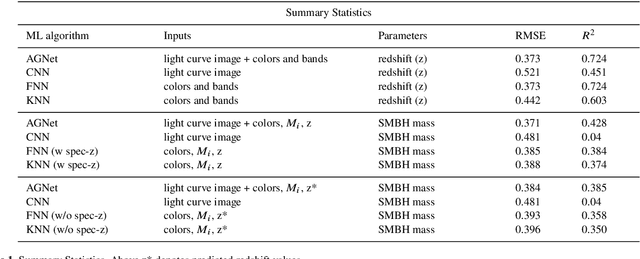
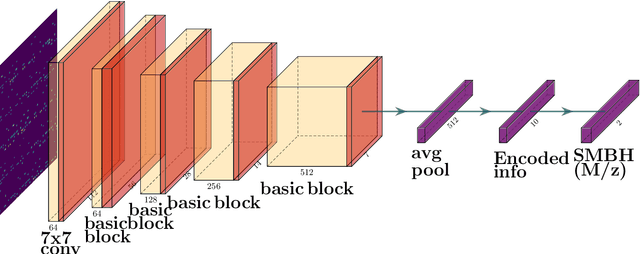
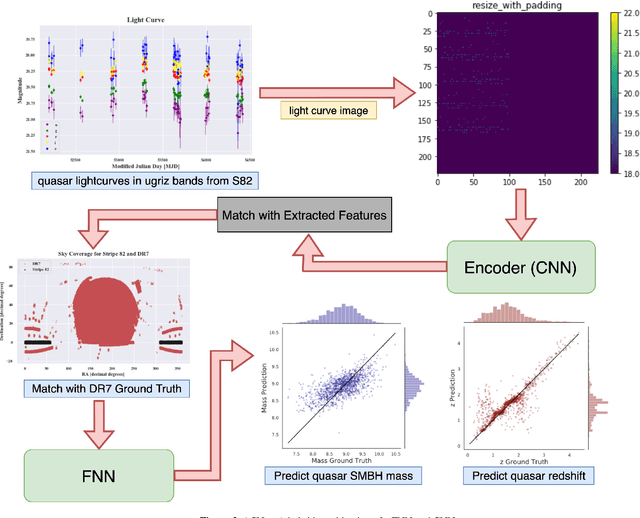
Abstract:Supermassive black holes (SMBHs) are ubiquitously found at the centers of most massive galaxies. Measuring SMBH mass is important for understanding the origin and evolution of SMBHs. However, traditional methods require spectroscopic data which is expensive to gather. We present an algorithm that weighs SMBHs using quasar light time series, circumventing the need for expensive spectra. We train, validate, and test neural networks that directly learn from the Sloan Digital Sky Survey (SDSS) Stripe 82 light curves for a sample of $38,939$ spectroscopically confirmed quasars to map out the nonlinear encoding between SMBH mass and multi-color optical light curves. We find a 1$\sigma$ scatter of 0.37 dex between the predicted SMBH mass and the fiducial virial mass estimate based on SDSS single-epoch spectra, which is comparable to the systematic uncertainty in the virial mass estimate. Our results have direct implications for more efficient applications with future observations from the Vera C. Rubin Observatory. Our code, \textsf{AGNet}, is publicly available at {\color{red} \url{https://github.com/snehjp2/AGNet}}.
Inferring Black Hole Properties from Astronomical Multivariate Time Series with Bayesian Attentive Neural Processes
Jun 18, 2021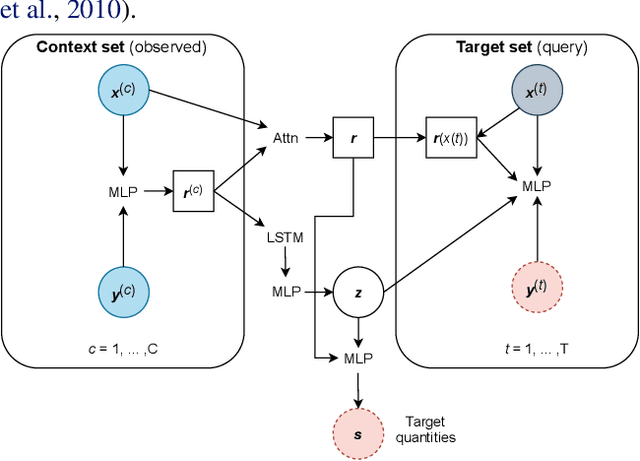

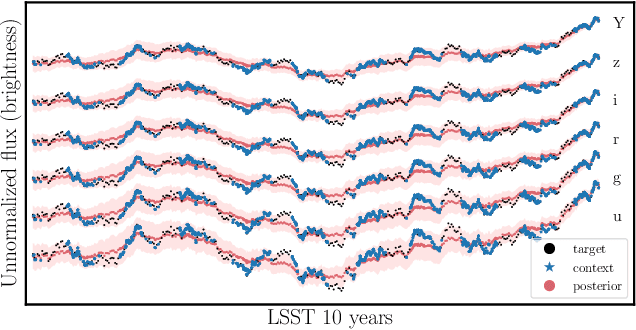
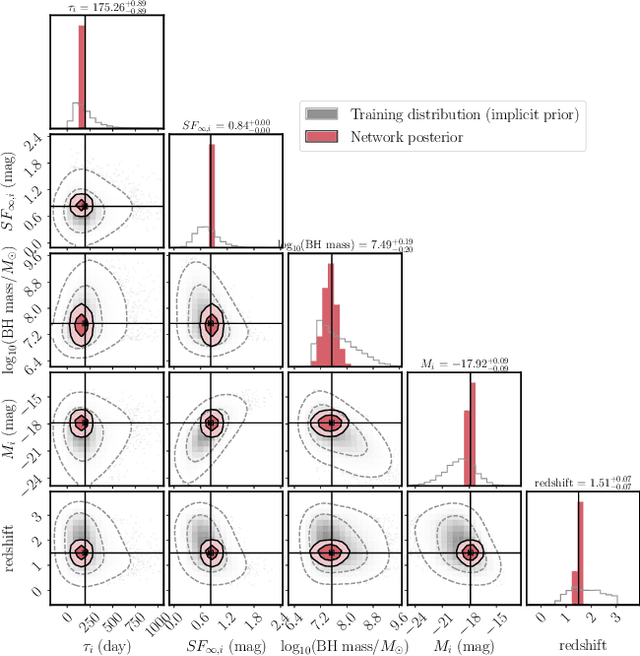
Abstract:Among the most extreme objects in the Universe, active galactic nuclei (AGN) are luminous centers of galaxies where a black hole feeds on surrounding matter. The variability patterns of the light emitted by an AGN contain information about the physical properties of the underlying black hole. Upcoming telescopes will observe over 100 million AGN in multiple broadband wavelengths, yielding a large sample of multivariate time series with long gaps and irregular sampling. We present a method that reconstructs the AGN time series and simultaneously infers the posterior probability density distribution (PDF) over the physical quantities of the black hole, including its mass and luminosity. We apply this method to a simulated dataset of 11,000 AGN and report precision and accuracy of 0.4 dex and 0.3 dex in the inferred black hole mass. This work is the first to address probabilistic time series reconstruction and parameter inference for AGN in an end-to-end fashion.
A Deep Learning Approach for Active Anomaly Detection of Extragalactic Transients
Mar 22, 2021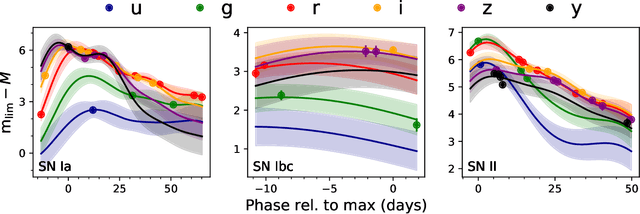
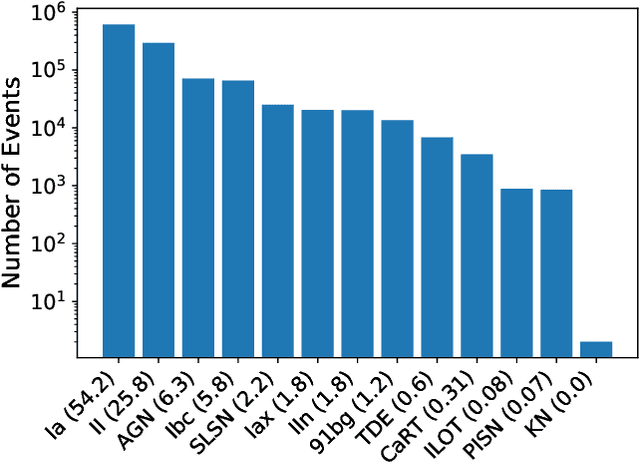
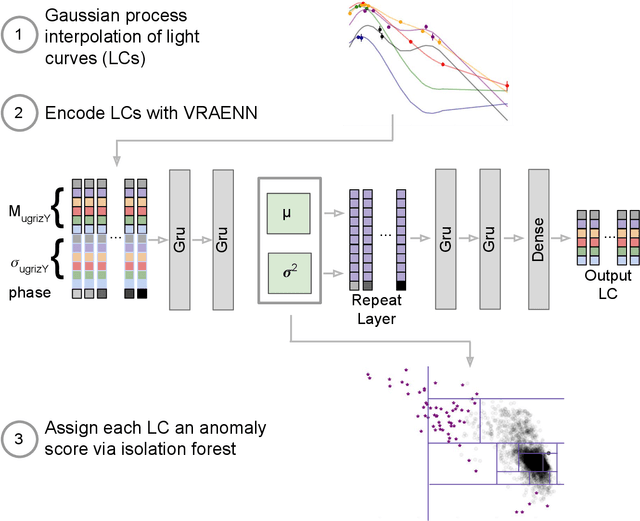
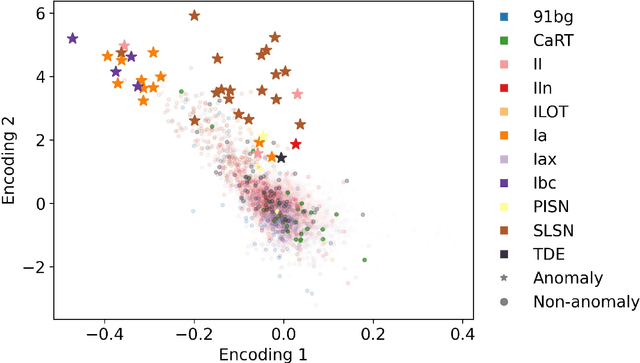
Abstract:There is a shortage of multi-wavelength and spectroscopic followup capabilities given the number of transient and variable astrophysical events discovered through wide-field, optical surveys such as the upcoming Vera C. Rubin Observatory. From the haystack of potential science targets, astronomers must allocate scarce resources to study a selection of needles in real time. Here we present a variational recurrent autoencoder neural network to encode simulated Rubin Observatory extragalactic transient events using 1% of the PLAsTiCC dataset to train the autoencoder. Our unsupervised method uniquely works with unlabeled, real time, multivariate and aperiodic data. We rank 1,129,184 events based on an anomaly score estimated using an isolation forest. We find that our pipeline successfully ranks rarer classes of transients as more anomalous. Using simple cuts in anomaly score and uncertainty, we identify a pure (~95% pure) sample of rare transients (i.e., transients other than Type Ia, Type II and Type Ibc supernovae) including superluminous and pair-instability supernovae. Finally, our algorithm is able to identify these transients as anomalous well before peak, enabling real-time follow up studies in the era of the Rubin Observatory.
AGNet: Weighing Black Holes with Machine Learning
Dec 01, 2020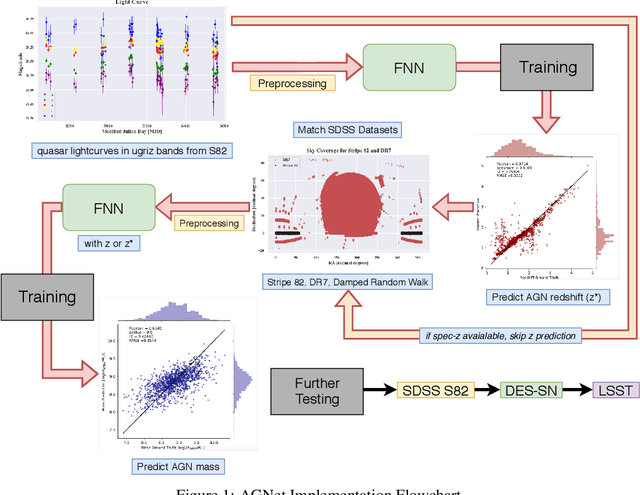

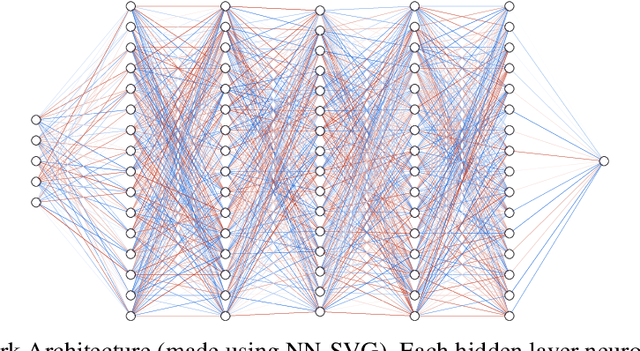
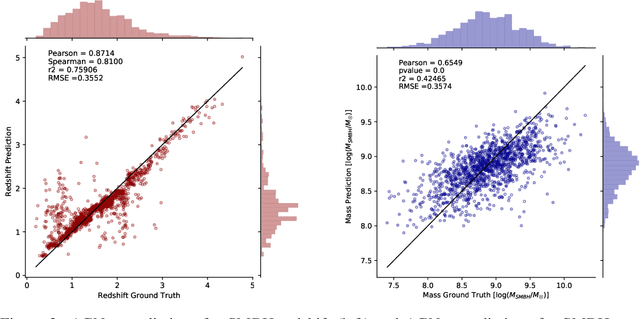
Abstract:Supermassive black holes (SMBHs) are ubiquitously found at the centers of most galaxies. Measuring SMBH mass is important for understanding the origin and evolution of SMBHs. However, traditional methods require spectral data which is expensive to gather. To solve this problem, we present an algorithm that weighs SMBHs using quasar light time series, circumventing the need for expensive spectra. We train, validate, and test neural networks that directly learn from the Sloan Digital Sky Survey (SDSS) Stripe 82 data for a sample of $9,038$ spectroscopically confirmed quasars to map out the nonlinear encoding between black hole mass and multi-color optical light curves. We find a 1$\sigma$ scatter of 0.35 dex between the predicted mass and the fiducial virial mass based on SDSS single-epoch spectra. Our results have direct implications for efficient applications with future observations from the Vera Rubin Observatory.
Large-Scale Gravitational Lens Modeling with Bayesian Neural Networks for Accurate and Precise Inference of the Hubble Constant
Nov 30, 2020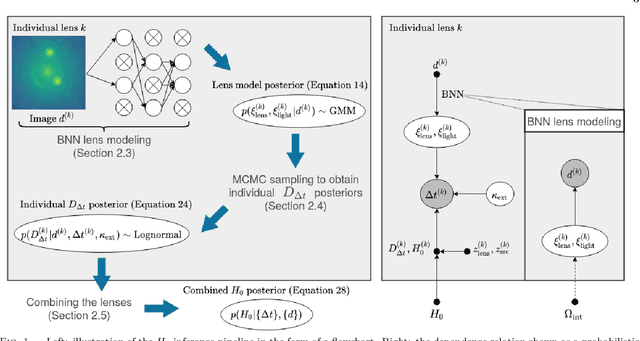
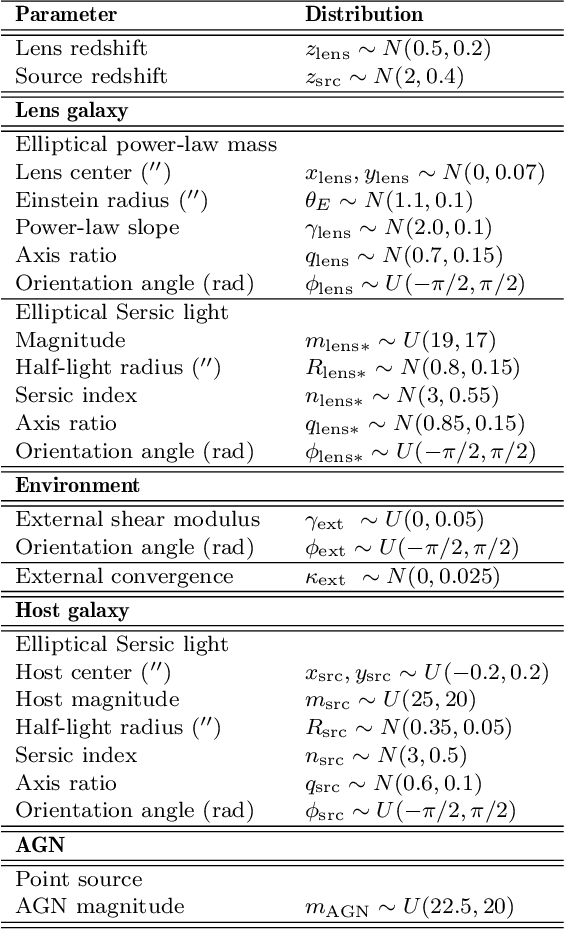
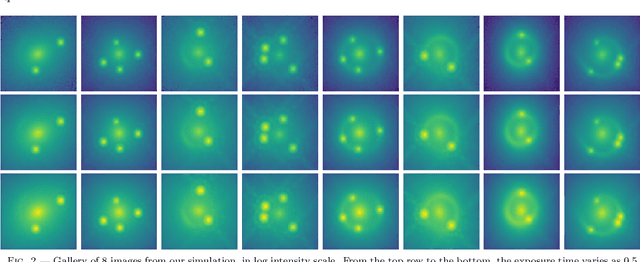
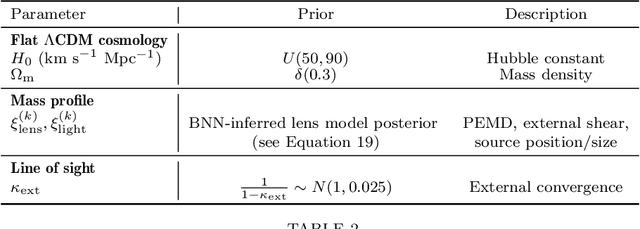
Abstract:We investigate the use of approximate Bayesian neural networks (BNNs) in modeling hundreds of time-delay gravitational lenses for Hubble constant ($H_0$) determination. Our BNN was trained on synthetic HST-quality images of strongly lensed active galactic nuclei (AGN) with lens galaxy light included. The BNN can accurately characterize the posterior PDFs of model parameters governing the elliptical power-law mass profile in an external shear field. We then propagate the BNN-inferred posterior PDFs into ensemble $H_0$ inference, using simulated time delay measurements from a plausible dedicated monitoring campaign. Assuming well-measured time delays and a reasonable set of priors on the environment of the lens, we achieve a median precision of $9.3$\% per lens in the inferred $H_0$. A simple combination of 200 test-set lenses results in a precision of 0.5 $\textrm{km s}^{-1} \textrm{ Mpc}^{-1}$ ($0.7\%$), with no detectable bias in this $H_0$ recovery test. The computation time for the entire pipeline -- including the training set generation, BNN training, and $H_0$ inference -- translates to 9 minutes per lens on average for 200 lenses and converges to 6 minutes per lens as the sample size is increased. Being fully automated and efficient, our pipeline is a promising tool for exploring ensemble-level systematics in lens modeling for $H_0$ inference.
Learning Principle of Least Action with Reinforcement Learning
Nov 26, 2020
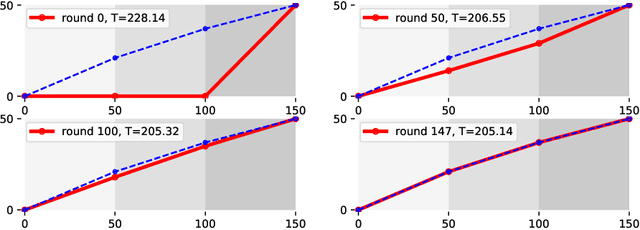
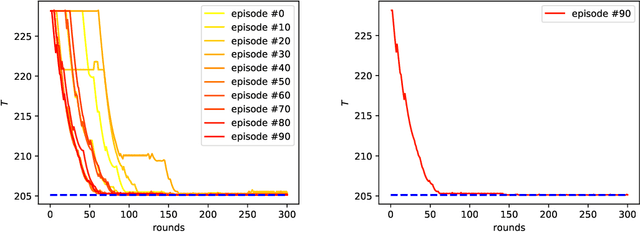
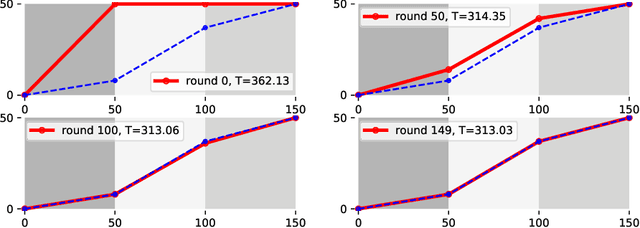
Abstract:Nature provides a way to understand physics with reinforcement learning since nature favors the economical way for an object to propagate. In the case of classical mechanics, nature favors the object to move along the path according to the integral of the Lagrangian, called the action $\mathcal{S}$. We consider setting the reward/penalty as a function of $\mathcal{S}$, so the agent could learn the physical trajectory of particles in various kinds of environments with reinforcement learning. In this work, we verified the idea by using a Q-Learning based algorithm on learning how light propagates in materials with different refraction indices, and show that the agent could recover the minimal-time path equivalent to the solution obtained by Snell's law or Fermat's Principle. We also discuss the similarity of our reinforcement learning approach to the path integral formalism.
Anomaly Detection for Multivariate Time Series of Exotic Supernovae
Oct 21, 2020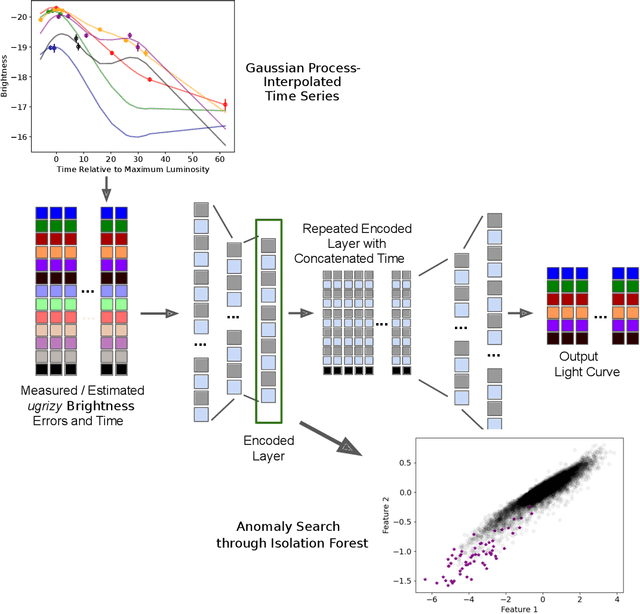

Abstract:Supernovae mark the explosive deaths of stars and enrich the cosmos with heavy elements. Future telescopes will discover thousands of new supernovae nightly, creating a need to flag astrophysically interesting events rapidly for followup study. Ideally, such an anomaly detection pipeline would be independent of our current knowledge and be sensitive to unexpected phenomena. Here we present an unsupervised method to search for anomalous time series in real time for transient, multivariate, and aperiodic signals. We use a RNN-based variational autoencoder to encode supernova time series and an isolation forest to search for anomalous events in the learned encoded space. We apply this method to a simulated dataset of 12,159 supernovae, successfully discovering anomalous supernovae and objects with catastrophically incorrect redshift measurements. This work is the first anomaly detection pipeline for supernovae which works with online datastreams.
 Add to Chrome
Add to Chrome Add to Firefox
Add to Firefox Add to Edge
Add to Edge